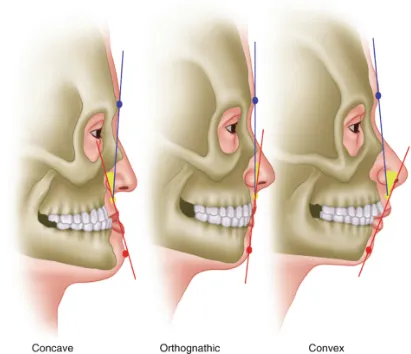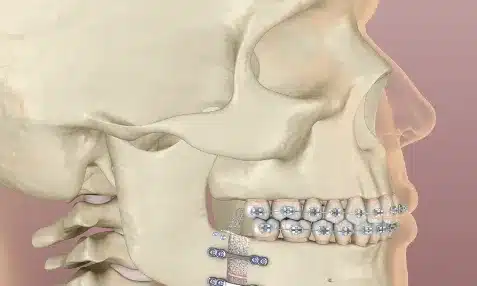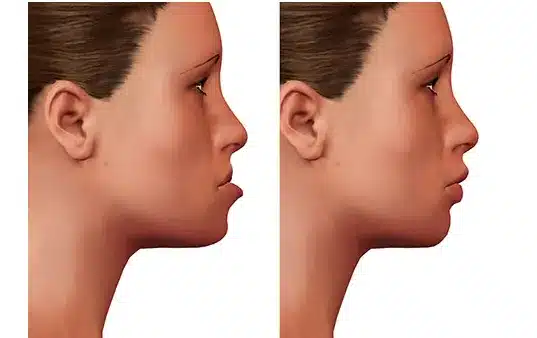Orthognathic surgery, also known as maxillofacial surgery, is a specialized field aimed at correcting severe jaw discrepancies through precise surgical interventions. Often referred to as corrective jaw surgery, it involves collaboration between oral and maxillofacial surgeons and orthodontists to address functional and aesthetic concerns. Utilizing orthodontic principles alongside surgical techniques, this procedure aims to realign the jaws, enhancing both oral function and facial harmony.
What is Jaw Surgery?
Jaw surgery is a procedure aimed at addressing misalignments, deformities, and functional jaw issues. It involves repositioning the upper jaw (maxilla), lower jaw (mandible), or both to achieve better alignment and balance. This surgery can correct problems such as malocclusion (improper bite), open bite, overbite, underbite, and facial asymmetry.
Dentistry has a rich history that dates back thousands of years. From ancient civilizations’ crude dental practices to the advanced and sophisticated techniques used today, medical dentistry has evolved into a crucial branch of healthcare. This article explores the history of dentistry, its significance, various types of dental practices, standard treatments, and the educational journey of dentists.
How Does Jaw Surgery Work? Step-by-Step Overview
The process of jaw surgery typically involves several stages. Here is a step-by-step overview:
Pre-Surgical Phase
The pre-surgical phase of jaw surgery is critical for ensuring the success of the procedure and involves several key steps designed to prepare the patient, both physically and mentally, for surgery. Here’s a closer look at this phase:
Initial Consultation
The journey begins with a consultation where the surgeon evaluates the patient’s facial structure, jaw alignment, and dental health to determine the necessity and feasibility of surgery.
Orthodontic Preparation
Most patients will undergo orthodontic treatment before surgery, which can last 12-18 months. This step aligns the teeth properly in preparation for the surgery, ensuring the jaws will fit together correctly after the procedure.
Surgical Planning
Using advanced imaging techniques, such as 3D X-rays or CT scans, the surgeon meticulously plans the procedure. Modern technology, including computer-aided design (CAD) and simulation, helps in visualizing the outcome and preparing for the surgery.
Surgical Phase
- Anesthesia: On the day of the surgery, the patient is placed under general anesthesia to ensure they are asleep and pain-free throughout the procedure.
- Making the Cuts: The surgeon makes cuts in the jawbones, which can be inside the mouth to minimize visible scarring. In some cases, small cuts outside the mouth might be necessary.
- Repositioning the Jaw: Depending on the specific needs of the patient, the surgeon repositions the jawbones. This can involve moving the upper jaw, lower jaw, chin, or a combination of these.
- Securing the Jaw: After aligning the jaw correctly, the surgeon secures the bones in their new position using screws, plates, and rubber bands. These materials are often designed to integrate into the bone structure over time.
Post-Surgical Phase
- Initial Recovery: The patient typically spends a couple of days in the hospital for monitoring. Swelling and discomfort are common but managed with medication.
- Follow-up and Orthodontics: After a period of healing, the patient continues with orthodontic treatment to fine-tune the alignment of their teeth and ensure a proper bite. This phase can last several months.
- Long-Term Recovery and Evaluation: The full benefits of jaw surgery can take up to a year to become fully apparent. During this time, the patient will have regular check-ups with their surgeon and orthodontist to monitor healing and progress.
Conclusion
Jaw surgery is a significant medical procedure that can dramatically improve jaw function and aesthetics. The success of the surgery depends on careful planning, skilled surgical execution, and a dedicated recovery period. Patients considering jaw surgery should discuss the potential risks and benefits with their healthcare providers to make an informed decision.

Who Can Get Jaw Surgery?
Jaw surgery is typically recommended for individuals who experience significant jaw misalignments, functional difficulties, or aesthetic concerns that cannot be effectively addressed with orthodontic treatment alone. Candidates for orthognathic surgery may include those with:
- Severe malocclusion (misaligned bite)
- Open bite (gap between upper and lower teeth when closed)
- Overbite (protruding upper jaw)
- Underbite (protruding lower jaw)
- Facial asymmetry
- Difficulty chewing or speaking due to jaw misalignment
It is important to consult with an oral and maxillofacial surgeon to determine whether jaw surgery is the appropriate course of action for your specific condition.
7 Benefits of Jaw Surgery
Jaw surgery offers numerous benefits for individuals with jaw misalignments or related issues. Here are seven advantages of orthognathic surgery:
- Improved Jaw Function: Jaw surgery can enhance chewing, biting, and speaking abilities, reducing discomfort and improving oral function.
- Enhanced Facial Aesthetics: By correcting jaw misalignments, orthognathic surgery can improve the balance and symmetry of the face, enhancing one’s appearance.
- Balanced Bite: Orthognathic surgery aligns the upper and lower jaws, resulting in a harmonious bite that improves dental health and reduces wear and tear on the teeth.
- Breathing Improvement: In some cases, jaw surgery can address airway issues and improve breathing, particularly for individuals with obstructive sleep apnea or other related conditions.
- Temporomandibular Joint (TMJ) Disorder Relief: Misaligned jaws can contribute to TMJ disorders, causing pain and discomfort. Correcting the jaw alignment through surgery can alleviate TMJ-related symptoms.
- Speech Enhancement: Jaw misalignments can affect speech clarity. Orthognathic surgery can help improve pronunciation and speech patterns, leading to better communication skills.
- Boosted Self-Confidence: Correcting jaw irregularities can significantly enhance self-esteem and confidence as individuals achieve a more harmonious facial appearance.
A Look into Universities and Clinical Practice
Jaw surgery, or orthognathic surgery, represents a significant field in maxillofacial surgery, combining advanced medical techniques and detailed anatomical knowledge to correct irregularities of the jaw bones and realign the jaws and teeth to improve both function and appearance. Among the most prominent universities delving into the intricacies of this field, Johns Hopkins University and Harvard Medical School stand out for their groundbreaking research and development of innovative surgical techniques.
These institutions have been at the forefront of integrating digital planning and robotic surgery into orthognathic procedures, enhancing precision and patient outcomes. Distinguished professionals like Dr. Edward Ellis III at the University of Texas Health Science Center at San Antonio have contributed extensively to the literature on the subject, particularly in areas of biomechanics and the long-term stability of jaw surgery outcomes.
In the clinical landscape, the Mayo Clinic is renowned as one of the most active and advanced hospitals for jaw surgery, offering comprehensive treatment plans that incorporate state-of-the-art technology and interdisciplinary care. Their teams specialize in a range of corrective surgeries, including those for treating severe malocclusions, sleep apnea, and congenital defects of the jaw.
In terms of statistics, the field has seen a consistent rise in the number of procedures performed annually, with data indicating that over 5,000 orthognathic surgeries are carried out each year in the United States alone. This growth is partially attributed to the advancements in surgical techniques, such as 3D imaging and computer-aided surgical simulation, that have significantly improved the safety, efficacy, and predictability of outcomes, making jaw surgery a viable option for a broader range of patients seeking both functional improvement and aesthetic enhancement.
What is Involved in Orthognathic Surgery?
Orthognathic surgery is a comprehensive process that involves several elements:
Jawline fat injection, a cutting-edge technique in jawline contouring, utilizes autologous fat grafting to enhance facial aesthetics through precise volume enhancement. This minimally invasive procedure strategically redistributes the patient’s own fat to sculpt a more defined, aesthetically pleasing jawline. Embraced by cosmetic surgery for its natural-looking results, this method has become a cornerstone for individuals seeking to refine their facial contours without the use of implants.
- Consultation and evaluation with an oral and maxillofacial surgeon.
- Collaborative treatment planning with an orthodontist.
- Pre-surgical orthodontic preparation, which may include wearing braces.
- Surgical procedure involving bone repositioning, reshaping, or grafting.
- Post-operative recovery, including managing pain, swelling, and diet adjustments.
- Ongoing orthodontic treatment for final bite alignment and tooth positioning.
- Regular follow-up appointments to monitor progress and address any concerns.
jaw surgery, offers numerous benefits for individuals seeking to correct jaw misalignments and improve their overall oral function
Before and Aftercare of Jaw Surgery
Proper before and aftercare is crucial for a successful outcome. Here are some key considerations:
Before Surgery:
- Follow all instructions provided by your surgical and orthodontic team.
- Maintain good oral hygiene to minimize the risk of infection.
- Discuss any existing medical conditions or medications with your surgeon.
- Follow any dietary restrictions or preparations recommended by your healthcare providers.
- Prepare your living space for a comfortable recovery, including soft food options and necessary supplies.
In most cases, an orthodontist places braces on your teeth before surgery. Braces are usually on for 12 to18 months before surgery to level and align your teeth in preparation for surgery. Mayo Clinic
After Surgery:
- Take prescribed pain medication as directed.
- Follow a soft or liquid diet as advised by your surgeon.
- Practice good oral hygiene, including rinsing with saltwater.
- Attend all scheduled follow-up appointments with your dental team.
- Avoid strenuous physical activities and follow the surgeon’s guidance on resuming normal activities.
- Be patient with the healing process, as it can take several weeks or months for complete recovery.
Jaw surgery offers numerous benefits for individuals with jaw misalignments or related issues.
Summary
When deciding between a brow lift and eyelid surgery, individuals must consider various factors beyond mere cosmetic enhancement, particularly if they have underlying maxillofacial concerns. Corrective jaw surgery, often performed by oral and maxillofacial surgeons in collaboration with orthodontists, may address facial asymmetry and TMJ disorders, which can influence overall facial appearance.
Chin augmentation may also play a role in achieving facial harmony. Therefore, individuals with significant facial asymmetry or TMJ issues may benefit from addressing these concerns through corrective jaw surgery or related procedures before considering cosmetic surgeries such as brow lifts or eyelid surgery.
However, if the primary concern is rejuvenating the upper face, improving brow position, or addressing excess skin and fat around the eyes, then a brow lift or eyelid surgery may be more appropriate. These procedures can enhance facial aesthetics and contribute to a more youthful appearance.
Ultimately, consultation with a qualified maxillofacial surgeon, orthodontist, or plastic surgeon is essential to determine the most suitable treatment plan based on individual needs, considering both functional and cosmetic aspects of facial harmony.
FAQs
1. Is jaw surgery painful?
During the procedure, you will be under general anesthesia and won’t experience any pain. However, post-surgery, some discomfort, swelling, and bruising can be expected. Pain medication prescribed by your surgeon can help manage any discomfort during recovery.
2. How long does the recovery process take?
The recovery period varies depending on the individual and the extent of the surgery. Generally, it takes several weeks for initial healing and a few months.
3. What are the potential risks and complications of jaw surgery?
While jaw surgery is generally safe, like any surgical procedure, it carries some risks, including:
- Infection
- Bleeding
- Nerve injury leading to numbness or tingling in the lips, chin, or tongue
- Difficulty opening the mouth
- Relapse of the jaw position
- Changes in sensation or function of the lips or face
However, with proper preparation, skilled surgical techniques, and attentive postoperative care, these risks can be minimized.
4. How long does it take to recover from jaw surgery?
The recovery period varies depending on the complexity of the surgery and individual healing rates. Initially, there may be swelling, bruising, and discomfort, which typically subside within a few weeks. Most patients can resume normal activities, including work or school, within a few weeks to a couple of months. However, full recovery, including complete healing of the bones and stabilization of the new jaw position, may take several months to a year.
5. Will I need braces after jaw surgery?
Yes, orthodontic treatment with braces is usually necessary before and after jaw surgery. Pre-surgical orthodontics helps align the teeth in preparation for surgery, while post-surgical orthodontics fine-tunes the bite and ensures long-term stability of the new jaw position. The duration of orthodontic treatment varies depending on individual circumstances but typically ranges from several months to a couple of years.
For more information:
Different Types of Cosmetic Face Surgery
Cheek Lift: Enhancing facial contours
https://www.mayoclinic.org/tests-procedures/jaw-surgery/about/pac-20384990#:~:text=Overview,also%20improve%20your%20facial%20appearance.





